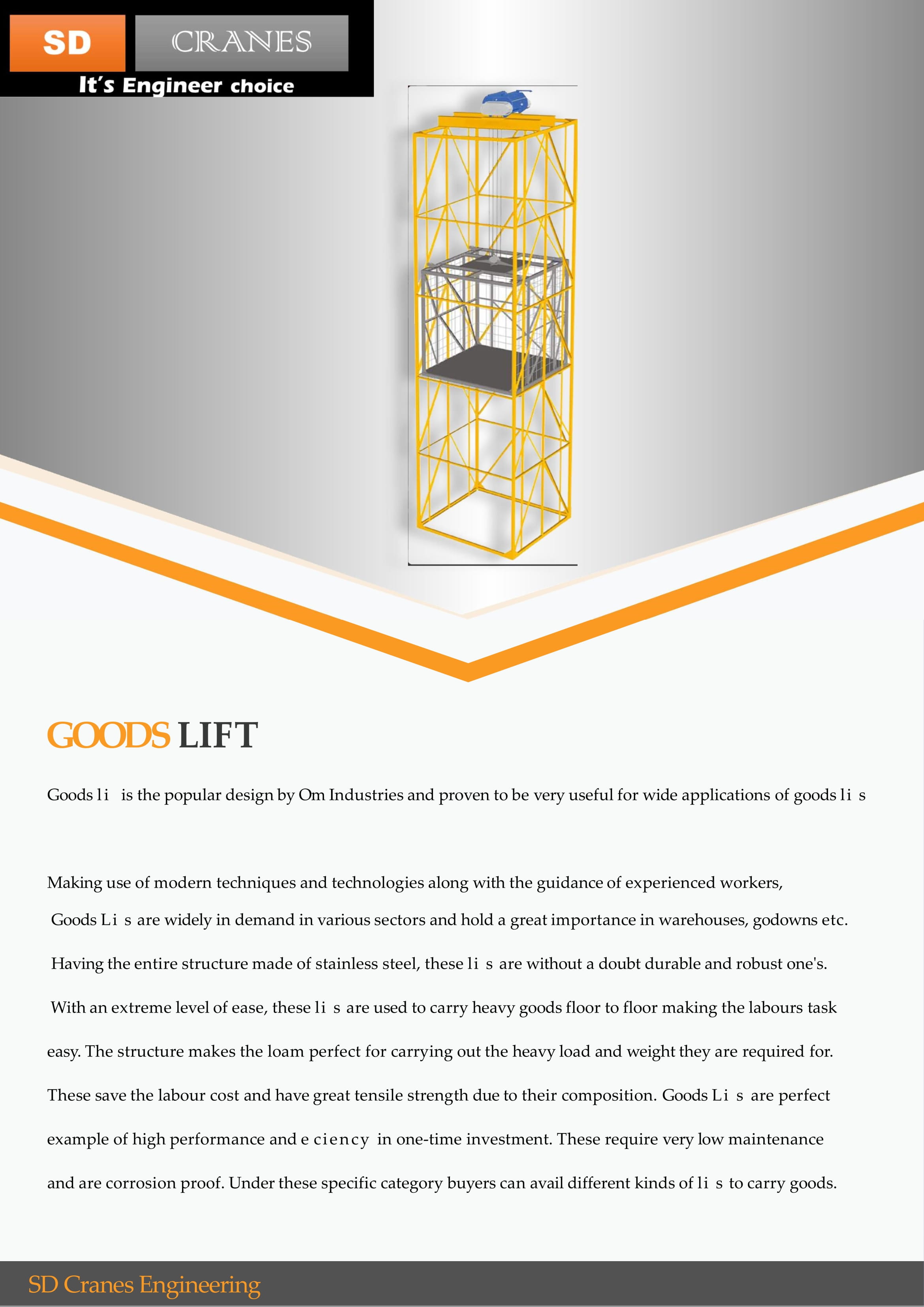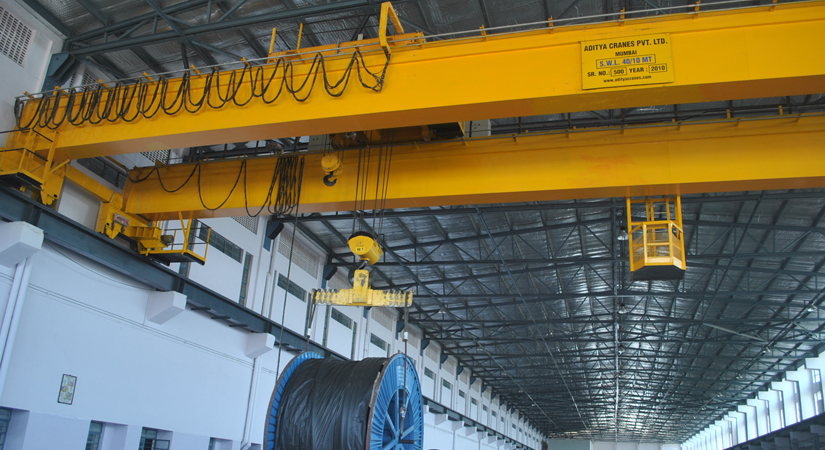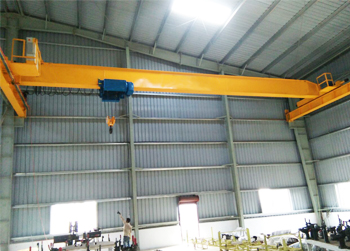A single girder crane is used for light duty weight and short period work. It has 20 tons lifting capacity normally and can work maximum for 6 hours. Actually, it is most suitable for 1 to 20 ton lifting capacity. Single girder EOT crane is useful for short time operation and low duty load.
About Us
Incepted in the year 2018, SD Cranes Engineering is a distinguished Manufacturer, Wholesaler and Trader offering an enormous consignment of Electric Wire Rope Hoist, EOT Crane etc.
Crane operates four business segments, each of which designs and manufactures highly engineered industrial products. Our businesses are all known for proprietary and differentiated technology, quality and reliability, deep vertical expertise, and responsiveness to unique customer needs. We serve some of the most demanding end markets, from aerospace & defense, bill validation and counterfeit detection, and oil & gas, to chemical, pharmaceutical, transportation, and many others.

Double Girder EOT Crane have 2 Main Girders across the span. 2. It consist of Electric Hoist travelling on lower flange of Main Girder and not required rail for cross traveling. It consist of a crab mechanism travels above both girders run over cross travel rails with platform to maintain all parts of crab
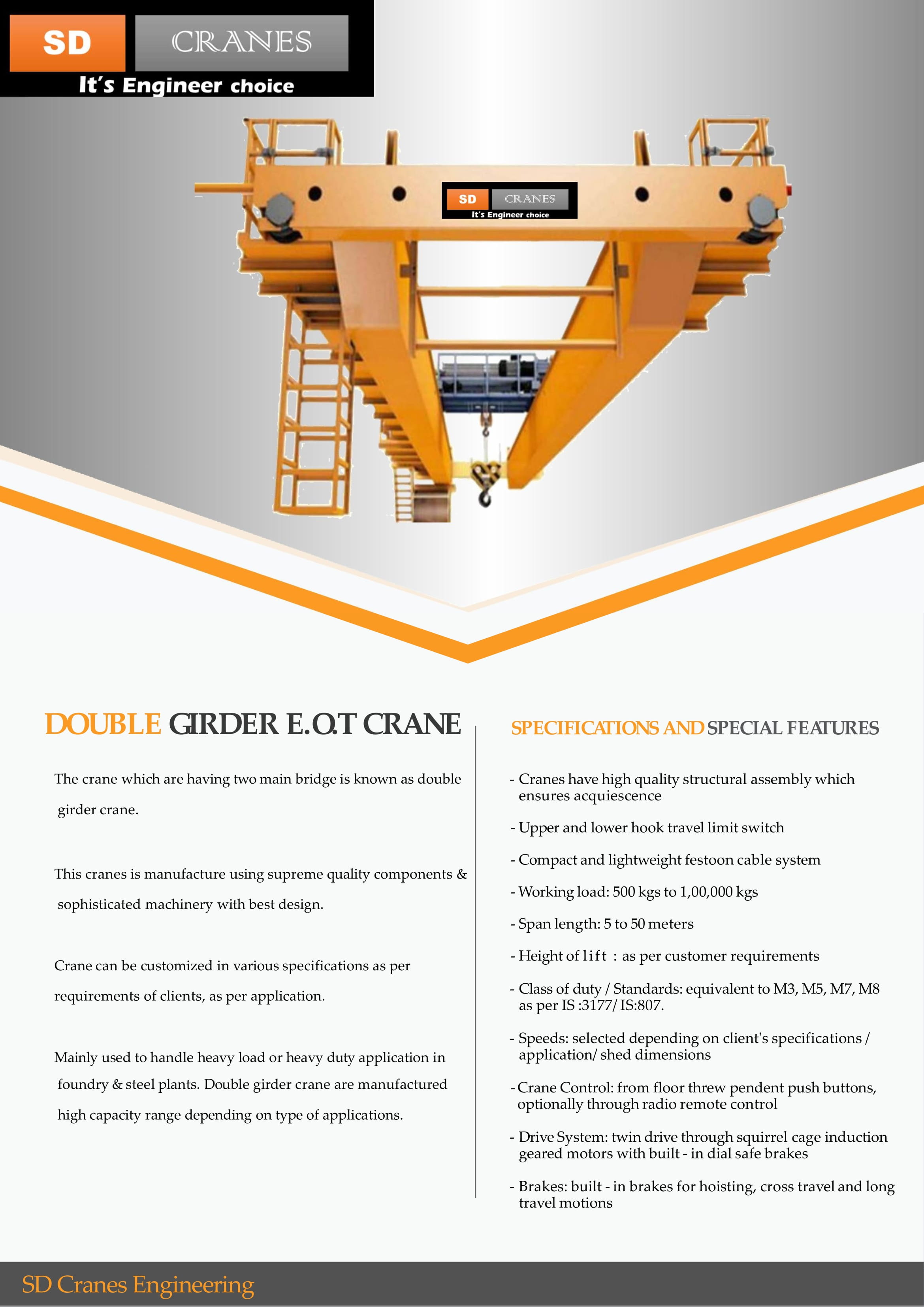
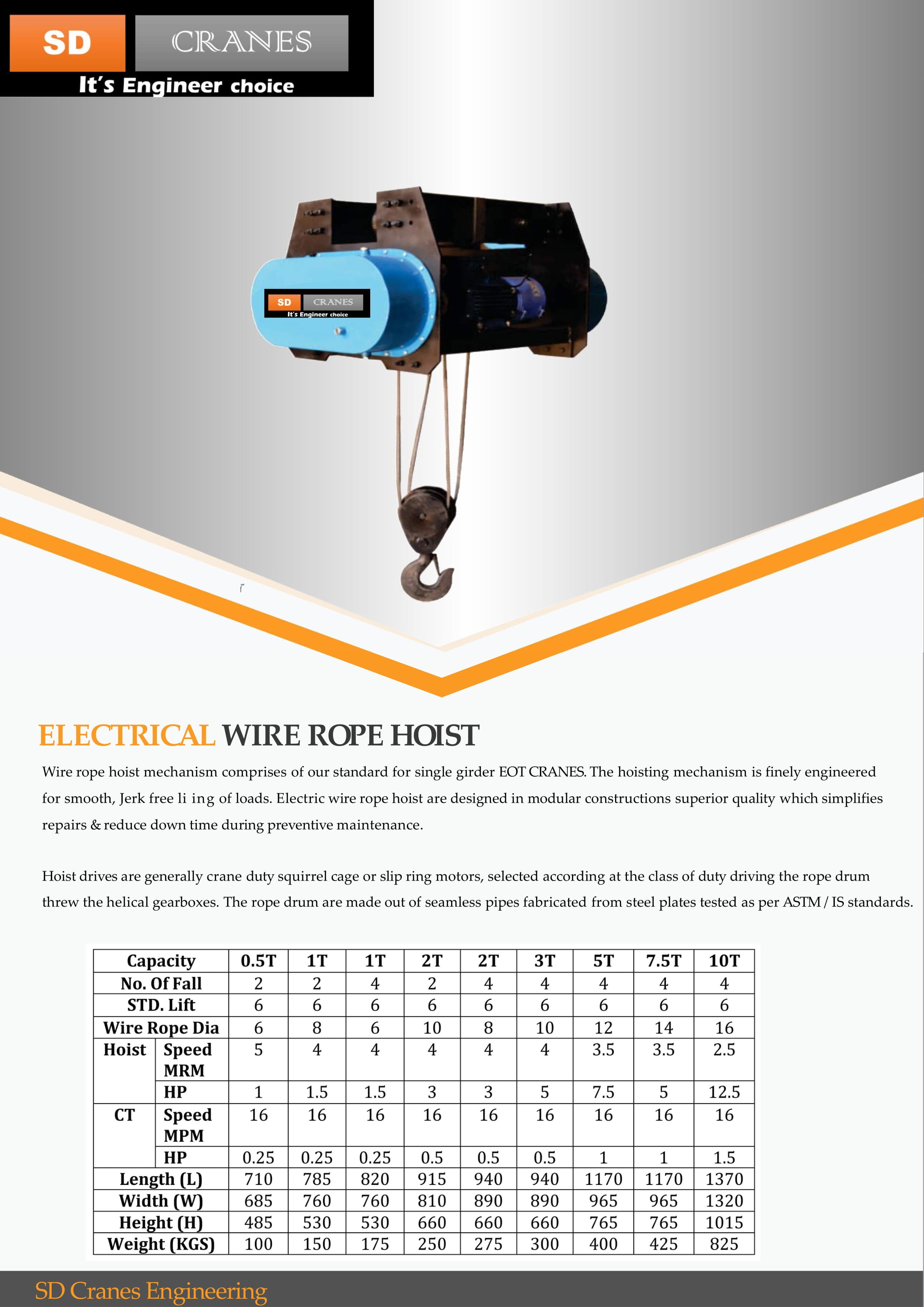
A hoist is a device used for lifting or lowering a load by means of a drum or lift-wheel around which rope or chain wraps. It may be manually operated, electrically or pneumatically driven and may use chain, fiber or wire rope as its lifting medium. The most familiar form is an elevator, the car of which is raised and lowered by a hoist mechanism.
A hoist is a mechanism that is used to handle, lift and move a load by applying less force than the weight that is to be moved. The loads are lifted and lowered with the help of a drum or a lift wheel wrapped with a rope or chain as a lifting medium.
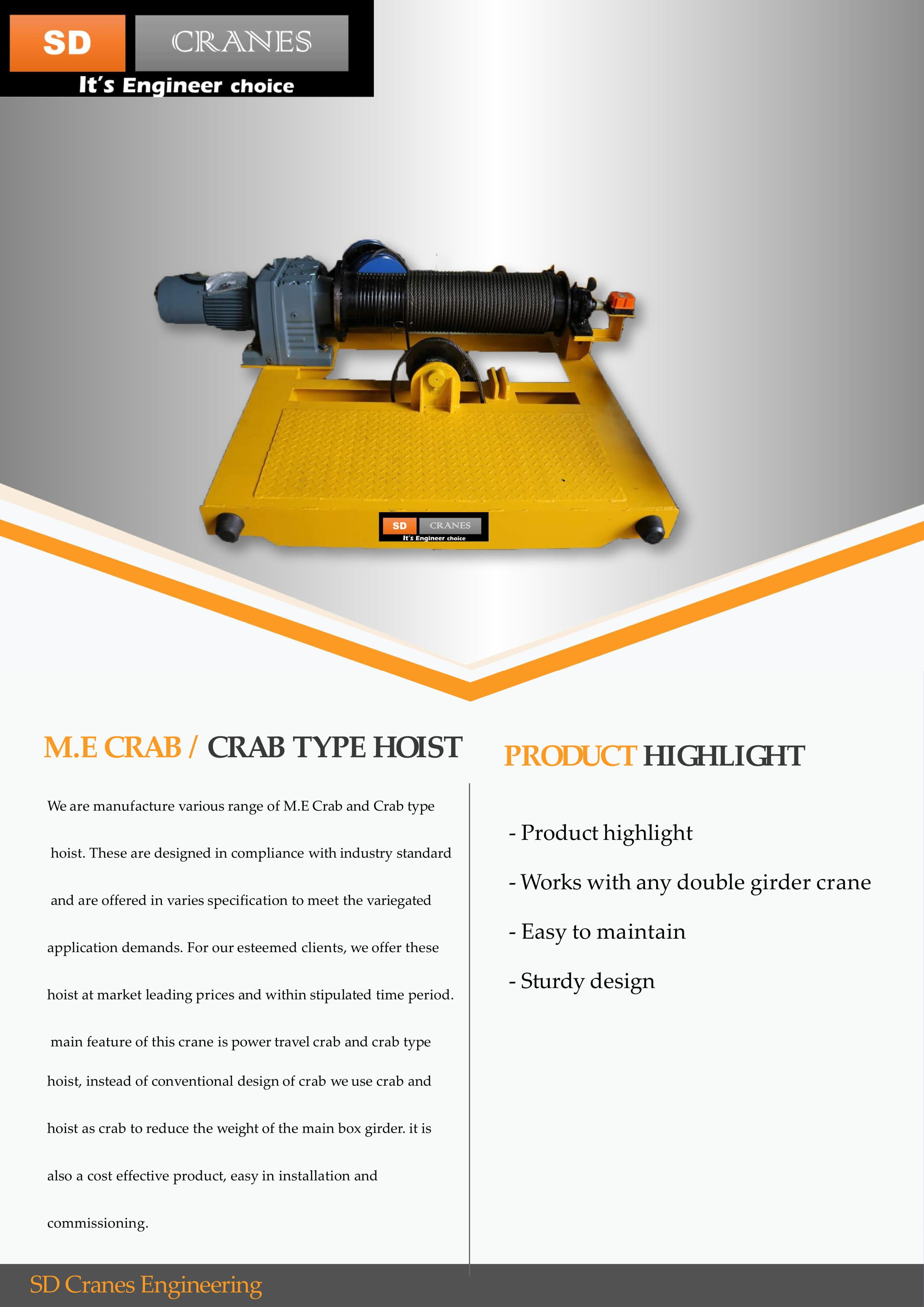
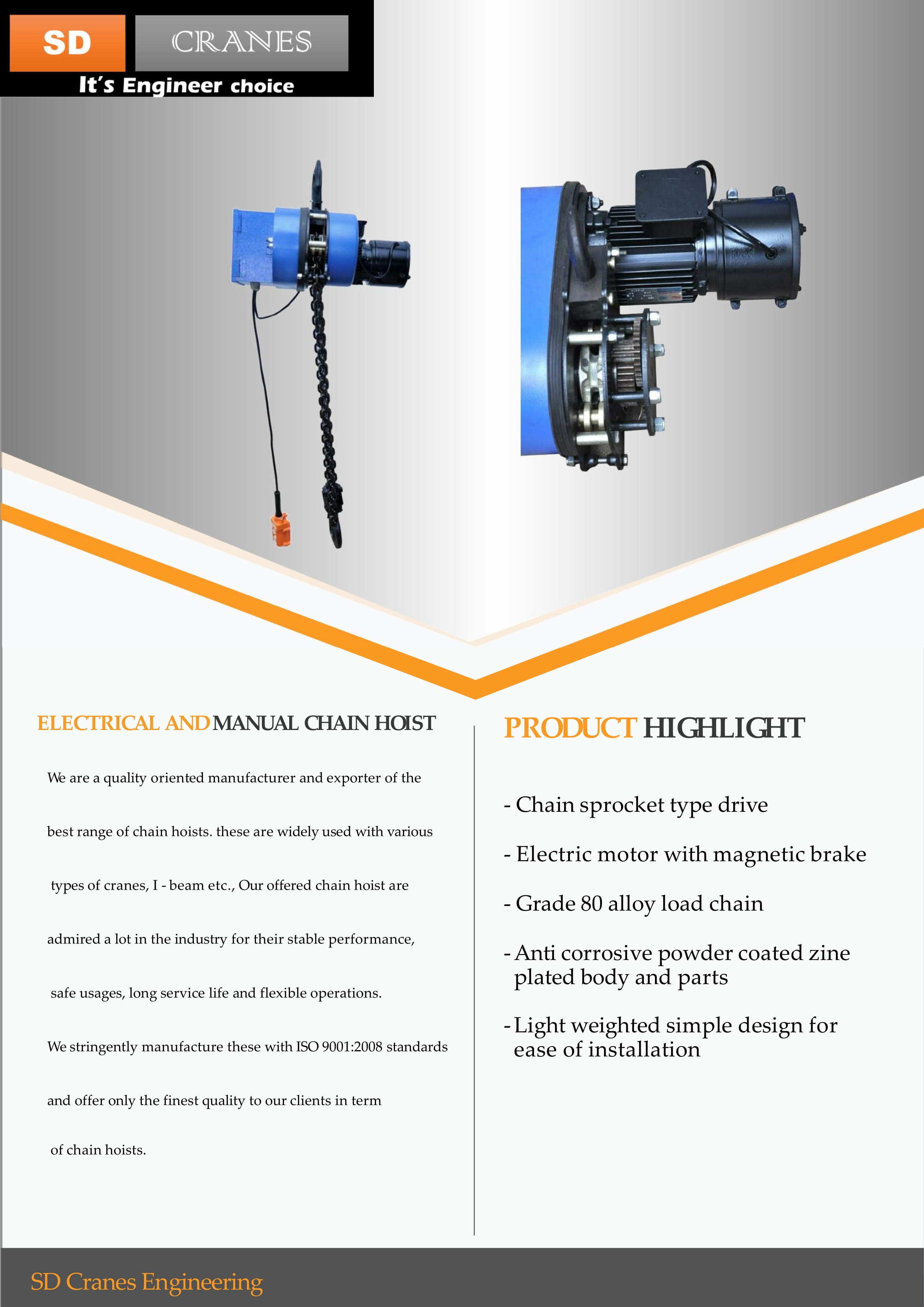
Electrical chain hoists streamline lifting tasks with automated precision, powered by electricity for efficient vertical movement. In contrast, manual chain hoists rely on human-operated mechanisms, offering simplicity and versatility for lighter loads where manual control is preferred.
A gantry crane is a type of overhead crane that uses legs to support the bridge, trolley, and hoist. These legs travel on along the ground on wheels or ride on rails implanted in the ground. A gantry crane is typically used for outdoor applications or for lifting capability below existing overhead bridge crane systems.

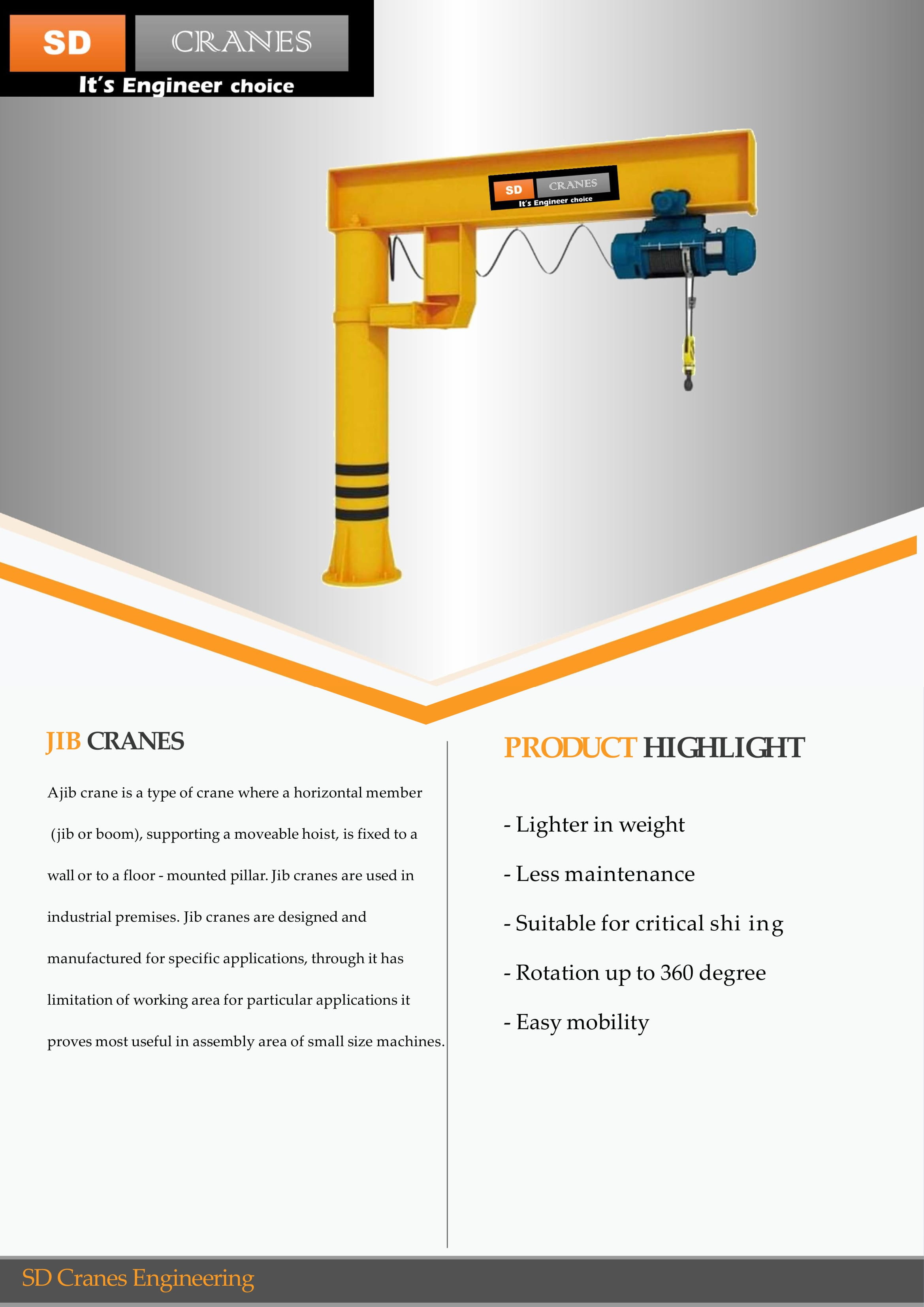
Jib cranes are versatile lifting devices with a horizontal arm, providing efficient material handling within a specific radius. They are commonly used in workshops and warehouses, offering a flexible solution for maneuvering loads in confined spaces.
A crane for lifting heavy loads was developed by the Ancient Greeks in the late 6th century BC.[7] The archaeological record shows that no later than c. 515 BC distinctive cuttings for both lifting tongs and lewis irons begin to appear on stone blocks of Greek temples.
